I spent two hours in Frostpunk 2 and the children only went feral once, so I'm taking that as a win
Preview | Frostpunk 2 isn't afraid to throw you in at the deep end, but it ultimately seems much more approachable than its predecessor
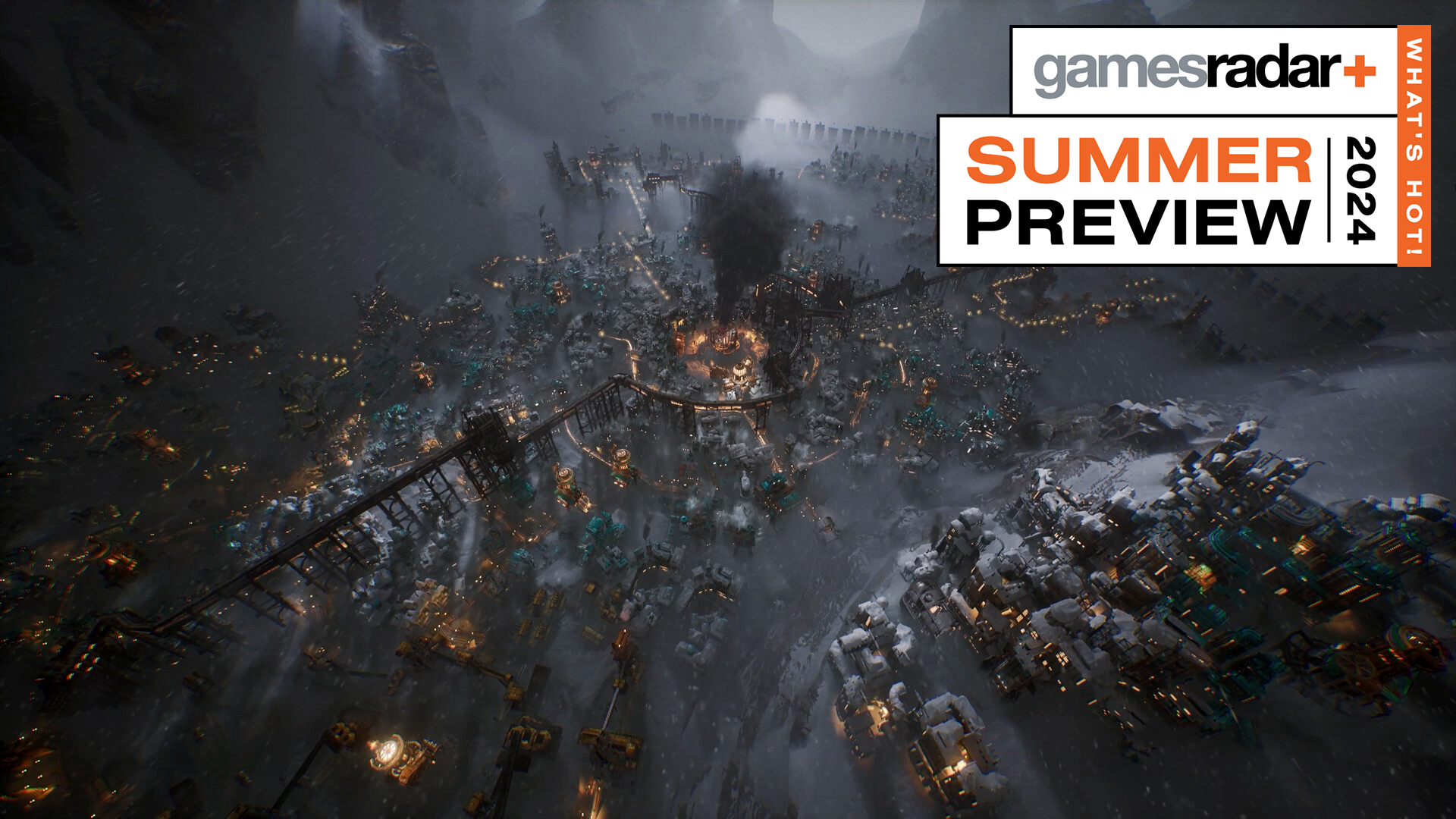
I am not good at Frostpunk. Even if things seem like they're going well, it only takes one thing to go wrong before the rest of my ice-covered city crumbles, with countless poor citizens falling ill, freezing, and dying. I was expecting much of the same when heading into my hands-on preview with 11 bit studios' highly anticipated city-building sequel, Frostpunk 2, for which the directors had reassured the room that there was no shame in setting the game to 'Easy' mode, and in fact, we probably should for the sake of the event.
Determined to redeem myself from my shaky experience with the first game, this wasn't advice I heeded, and at first, it seemed like a bad choice. I died in the tutorial section twice before I finally caved and decided that slaughtering poor baby seals for food was a worthwhile sacrifice to actually progress with the game. Sorry, little guys. However, I was surprised to find that from that point on, things were surprisingly approachable, with new systems seemingly aiding my city's survival rather than spelling their doom.
Frostpunk 2 kicks off 30 years after its predecessor, putting you into the shoes of the city's steward – who's taken on the mantle following the death of the former captain. As soon as you're thrown in, everything is going wrong – the generator isn't doing anything to keep everyone warm in the still-freezing world, for some reason there's no housing even though the city has been there for some time, and everyone hates you. Great! This doesn't make your first major task – passing a vote of confidence – particularly easy, as you have to make some big promises in order for the citizens to even consider giving you a chance.
Summer Games Preview
We are diving deep into the hottest upcoming games out of Summer Game Fest. To find all of our coverage, visit GamesRadar's What's Hot 2024 hub.
Democracy
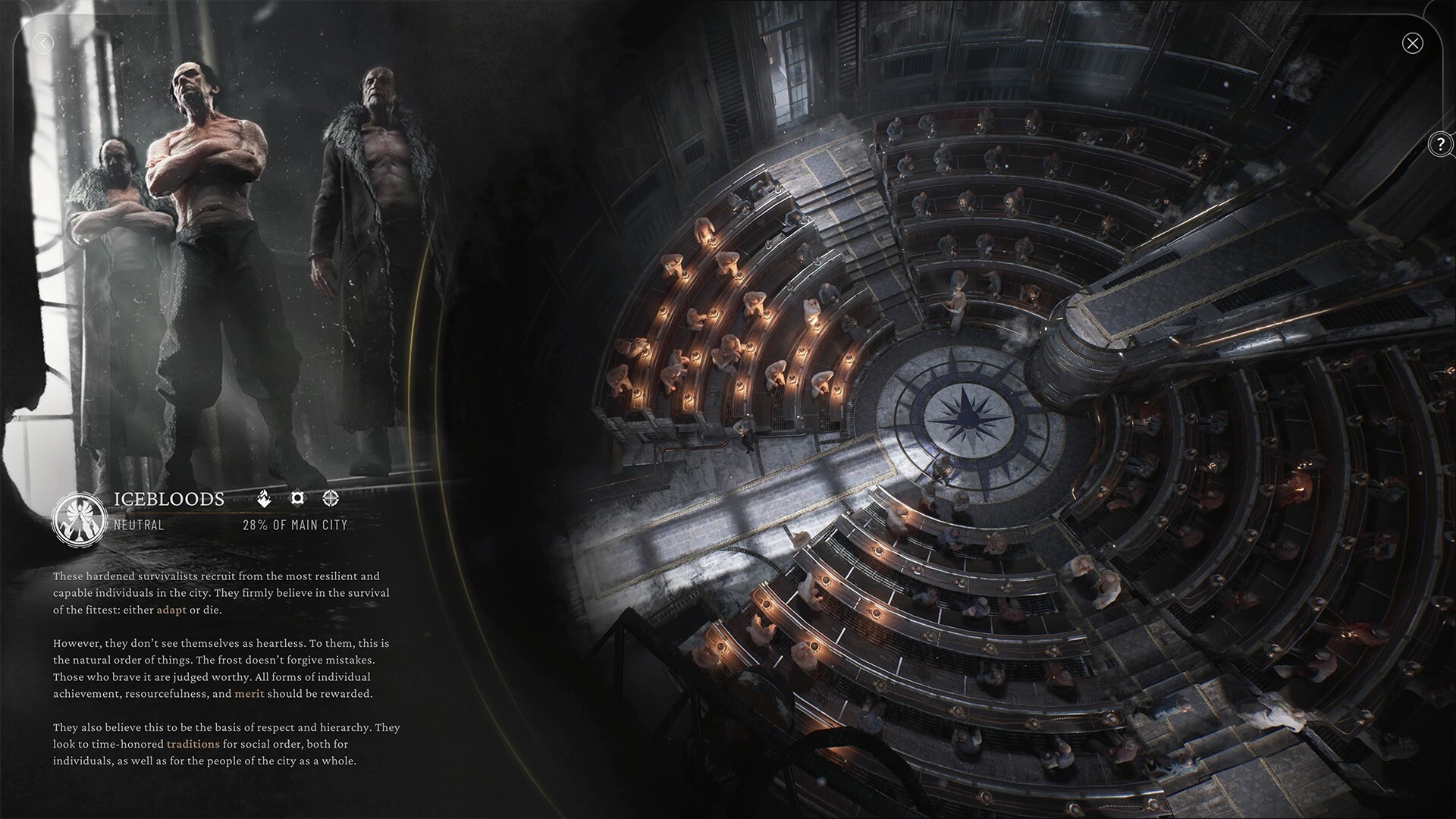
The opening objective introduces Frostpunk 2's main new gameplay mechanic - the Council. In the original game, players were free to enact whatever laws they wanted, ruling with an iron fist. Those children? Into the mines. Those workers? Forced to work non-stop for 24 hours. Choices like these aren't entirely your own in the sequel, as citizens are able to vote on laws before they're passed, allowing them to reject advances that might have helped make the whole situation a bit less of a mess.
Different communities within the city – such as the Frostlanders and New Londoners – all hold different values, which will sway their votes on particular issues. Thankfully, you can still persuade those less enthusiastic citizens to choose your side via negotiation – they'll vote your way as long as you make promises (often involving enacting further laws) that have to be fulfilled within a set timeframe. Fail to do this, and tension within the city will rise, potentially leading to an uprising.
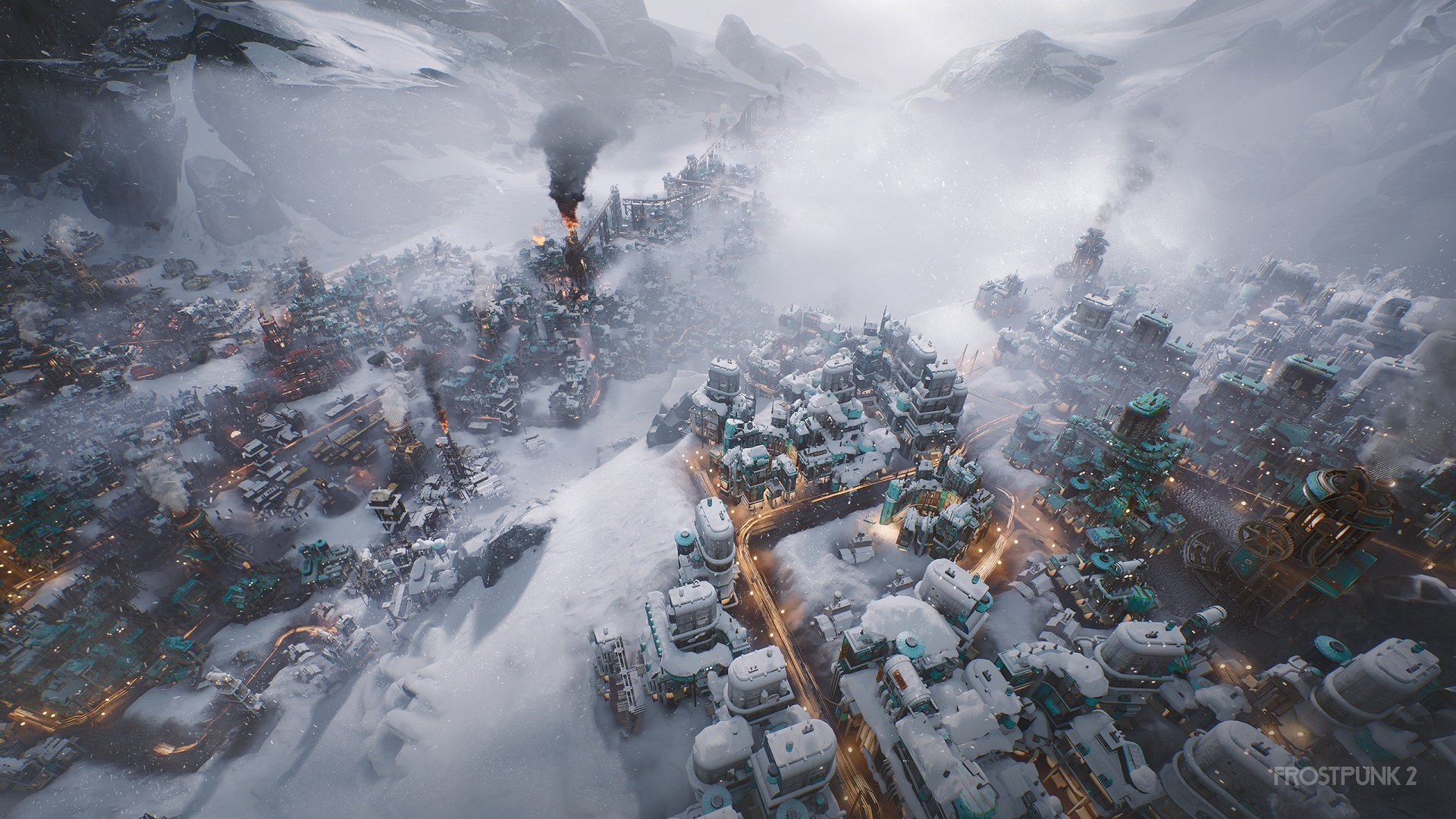
Frostpunk was about surviving the end of the world – Frostpunk 2 is about rebuilding its future
Heading into my hands-on session, I was expecting these city-wide votes to play a large part in my downfall, but I was surprised to find that during my couple of hours with the game, I only failed on one once (and that was because I forgot it was happening). It feels as though votes may not have a tremendous impact on the game's difficulty, but rather serve to illustrate the fascinating relationships and values each of the city's factions have. For example, the New Londoners and Frostlanders are known to clash with each other when it comes to strategy, even though neither of them care that much about economic or social issues. This helps build on the Frostpunk lore in a way that has a physical impact on your city, making it feel more tangible and ultimately worth paying attention to.
While the whole voting system certainly gives Frostpunk 2 a more political feel than the first game, co-game director and art director Łukasz Juszczyk denies the sequel being strictly political, stating it's more of an exploration of "human nature," and "the consequences" of individuals "being too convinced by their own beliefs." Ultimately, 11 bit studios just wanted to ensure that it had something "meaningful and worthwhile for the players" to dive into, because if not, "then maybe let's shut up."
Sign up to the GamesRadar+ Newsletter
Weekly digests, tales from the communities you love, and more
On this, as you might expect, some recent world events served as inspiration for the team – the COVID-19 pandemic and the quarantine that came with it, for example, can be seen reflected in particular choices you can make regarding the containment of illness in Frostpunk 2. "It is real, and it seems grim. [...] But hopefully, it'll make you think," Juszczyk adds.
Gritty realism
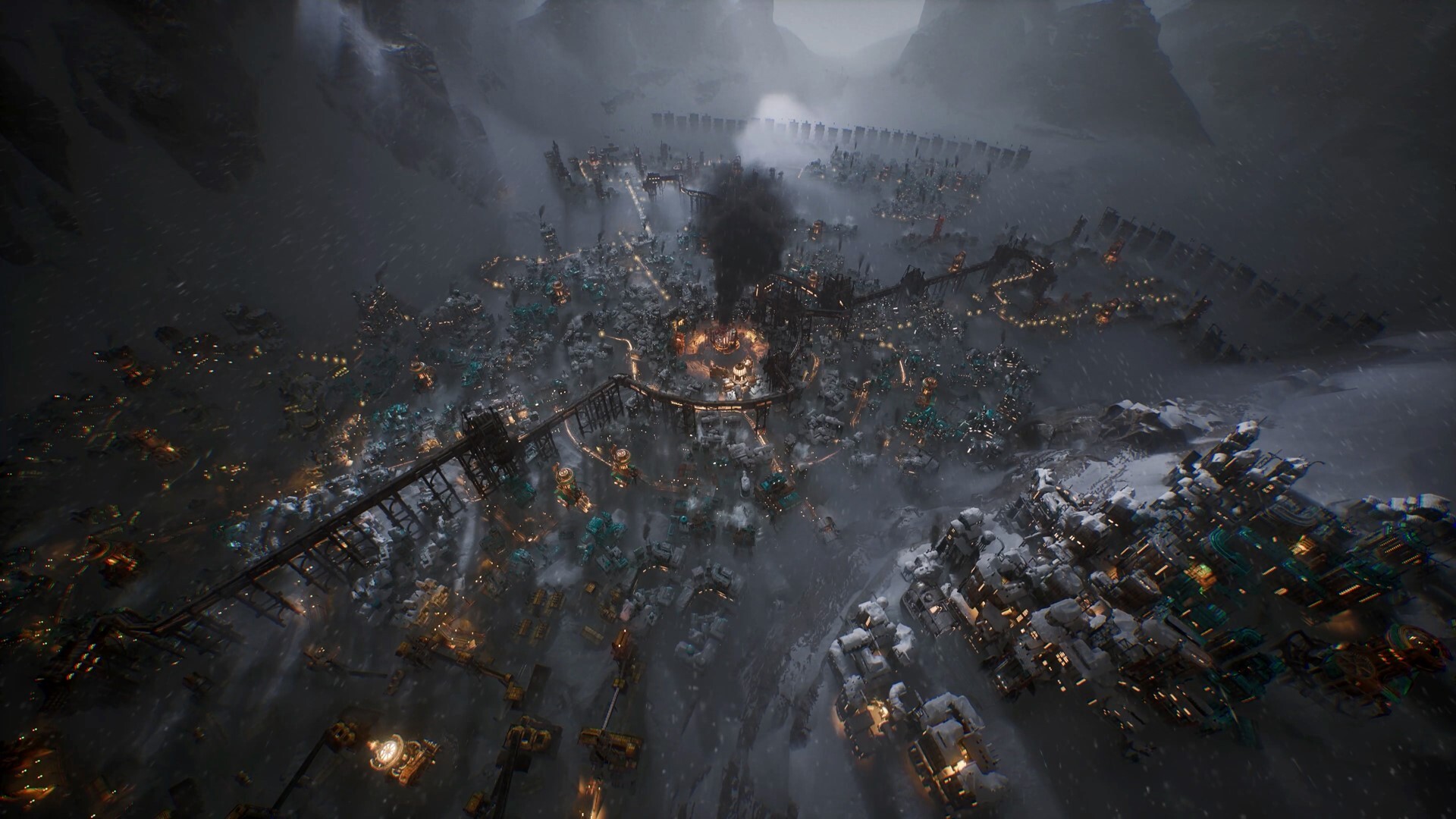
Veteran players will "have to learn again" when getting started with the sequel, but once those new systems click, what you're left with is much greater strategic freedom.
"Grim" is definitely an accurate word to use – playing through the start of Frostpunk 2's story, it's clear that the gritty realism that defined the original as such a unique city builder is still very much intact. From 'feral children' taking to the streets with knives to miners getting trapped and suffocated while trying to provide coal for the city, much like its predecessor, Frostpunk 2 is hardly a jolly time. It's no surprise that "it was really important" for the team to maintain this vibe, but Juszczyk clarifies it wasn't "about being bleak just for the sake of being dark and bleak," but rather how the team was able to "tell a story that will be relatable."
It feels easier to get absorbed in that story from the get-go, too, given how many more potential paths there seem to be to essentially 'win' this time around. Frostpunk 2 is undoubtedly a more complex game than the first, and Juszczyk reiterates that veteran players will "have to learn again" when getting started with the sequel, but once those new systems click, what you're left with is much greater strategic freedom.
"Frostpunk 1 is difficult, but at the end, if you learn some particular order of buildings, laws, et cetera, it's more like a puzzle," Juszczyk explains, pointing to the "really smart players on Reddit" who "for sure know the game way better than us." However, he adds that the developers wanted to give players a chance to "play around strategy" in the sequel.
"There's no one path to do this or that," he says, noting that there are "plenty of possibilities" of ways to approach the game. "In Frostpunk 1, when you played badly and suddenly, 'Okay, I've got 10 people alive. Okay, I'm fucked. Start over again.' And that's not the case here," Juszczyk continues. "You can really be in a really tough situation, and [think] 'Okay, let's be a responsible steward. Just 1,000 people dead, that's fine! Let's try to pull up and get back to the surface.'"
Challenges
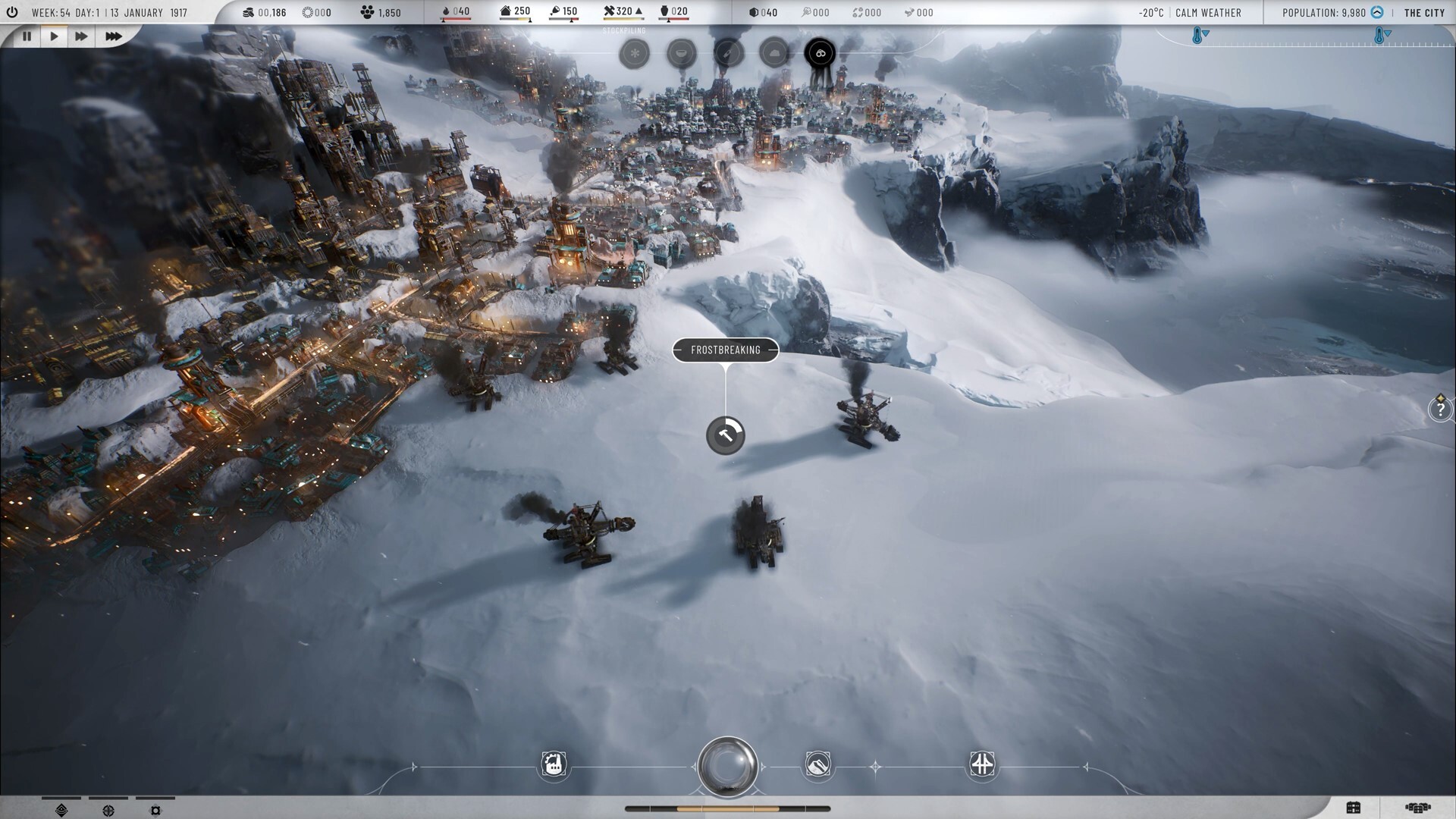
Although Frostpunk 2 is definitely more accommodating in this way, at this point, it's not without its issues. Namely, certain aspects aren't explained particularly well. One of the main tasks I was faced with during my preview session tasked me with sourcing a new permanent mining source from outside the city. My brave explorers were able to locate one such source when venturing the Frostlands, and I jumped at the opportunity to create a path in order for them to return safely with the goods, thinking I'd done my part. As time passed, I was confused as to why the task wasn't complete, but found out after the preview event from a fellow player that there was a whole separate option to transport the coal that I wasn't aware of – and neither were they until it was pointed out by a helpful dev.
I only had one major instance of confusion like this, but there were other more minor examples, too. At one point, when I was preparing to construct a new building, I was told I couldn't because I didn't have enough Cores. At this point, I'd not found any Cores, and the concept hadn't been explained at all, nor was any indication given as to how I could find some in the first place. Thankfully, I stumbled across two of them a bit later, allowing me to proceed, but it can definitely feel as though – for better or worse – you're expected to just work it out as you go, even if the clock is inevitably ticking to secure your citizens' health and satisfaction.
Ultimately though, I had a genuine blast playing Frostpunk 2, and was pleasantly surprised to find that its complexity didn't simply serve to make the city builder ridiculously difficult, but instead become a deeper and more engaging experience. Performance on PC wasn't an issue at all even in its pre-launch state, and I didn't encounter any bugs, either. As we get closer to its release on July 25, what's arguably most exciting is waiting to see what approaches Frostpunk 2 players will take using its new and expanded systems, and what bigger and better city layouts we'll end up seeing. To me personally, this already feels like it has the potential to be the better of the two games, but we'll just have to wait for the full release later this year.
For more games like Frostpunk, be sure to check out our list of the best city building games.

I'm one of GamesRadar+'s news writers, who works alongside the rest of the news team to deliver cool gaming stories that we love. After spending more hours than I can count filling The University of Sheffield's student newspaper with Pokemon and indie game content, and picking up a degree in Journalism Studies, I started my career at GAMINGbible where I worked as a journalist for over a year and a half. I then became TechRadar Gaming's news writer, where I sourced stories and wrote about all sorts of intriguing topics. In my spare time, you're sure to find me on my Nintendo Switch or PS5 playing through story-driven RPGs like Xenoblade Chronicles and Persona 5 Royal, nuzlocking old Pokemon games, or going for a Victory Royale in Fortnite.



